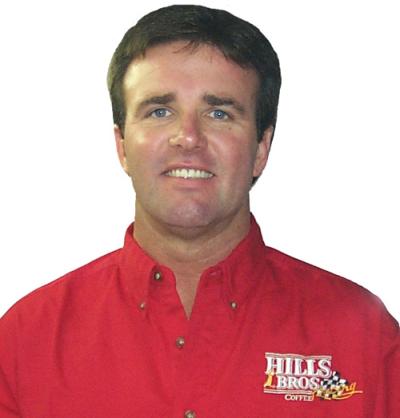Hut Stricklin goes to Darlington.
Hut Stricklin, driver of the No. 23 Hills Bros. Coffee Dodge, finished second at Darlington on September 1, 1996. His current crew chief, Philippe Lopez, was his crew chief that season and both are looking for a strong run together this weekend.
Hut Stricklin, driver of the No. 23 Hills Bros. Coffee Dodge, finished second at Darlington on September 1, 1996. His current crew chief, Philippe Lopez, was his crew chief that season and both are looking for a strong run together this weekend.
"Darlington is one of my favorite tracks," said Stricklin. "I just about won the race in 1996 driving for the Stavola Brothers with Philippe Lopez as my crew chief. The toughest part about the track is it is actually built to run 120 mph, but we now run at 170 mph. It is a thinking person's track and you can never lose focus. You have to think about what you are doing at all times and even if you don't lose your focus, you can still wind up with a stripe on your car. In the past you got a stripe, you were able to keep on going, but now we are going so fast that if you hit the wall, you've really damaged the car. This year, I feel very fortunate to be team-mates with Ward Burton and Tommy Baldwin. They won at Darlington last fall and we will have their set-up to start that they won the race with, which is certainly a plus. I feel like we've got a head start already."
The Hills Bros. Coffee Racing team are taking the same car Ward Burton won the Southern 500 with in 2001 to Darlington this weekend.
The Hills Bros. Racing team suffered their first DNF of the 2002 with a broken engine.
"It is a tough deal with the one engine rule right now," said Terry Elledge, engine builder for Bill Davis Racing. "We understand what NASCAR is trying to do with keeping the costs down by making this one engine rule. However, because it was implemented so abruptly, there are going to be some casualties until we get things figured out. My suggestion is implementing the rule part of the season. Use the one engine rule at the tracks like Bristol and Rockingham, 400-miles or less events where the tyres fall off quickly, and average RPMs drop. Once the tyres fall off, the engines don't sustain the high RPMs, which provides us a good test session to build these motors to go longer. However, at the larger tracks, and even places like Michigan and Chicago that are 400-mile events, you turn a high average RPM (8,000+) for a long time during each tyre run. This is where you'll see a lot of teams having trouble. For now, I'd like to see NASCAR keep the one engine rule, but give us two engines at the 500-mile and longer events and at the tracks where the engines sustain high RPMs to get a feel for what direction we need to go."


![Johann Zarco, LCR, Honda RC213V, 2024 San Marino MotoGP, Misano, action [Gold & Goose]](https://cdn.crash.net/styles/thumbnail/s3/2024-09/GnG_1166323_HiRes.jpg?itok=vpgrU7Q4)

![Jack Miller, KTM Factory Racing, KTM RC16, San Marino MotoGP, Misano, action [Gold & Goose]](https://cdn.crash.net/styles/thumbnail/s3/2024-09/GnG_1167624_HiRes.jpg?itok=iz7mA4EQ)


![Fabio Quartararo, Monster Energy Yamaha Racing, Yamaha M1, 2024 MotoGP, Misano Test, action [Gold & Goose]](https://cdn.crash.net/styles/thumbnail/s3/2024-09/GnG_1168928_HiRes.jpg?itok=fcYSole_)
![Toprak Razgatlioglu, ROKiT BMW Motorrad, BMW M 1000 RR, Magny-Cours, WorldSBK [Gold & Goose]](https://cdn.crash.net/styles/thumbnail/s3/2024-09/GnG_1165133_HiRes.jpg?itok=GD5SVNVG)

